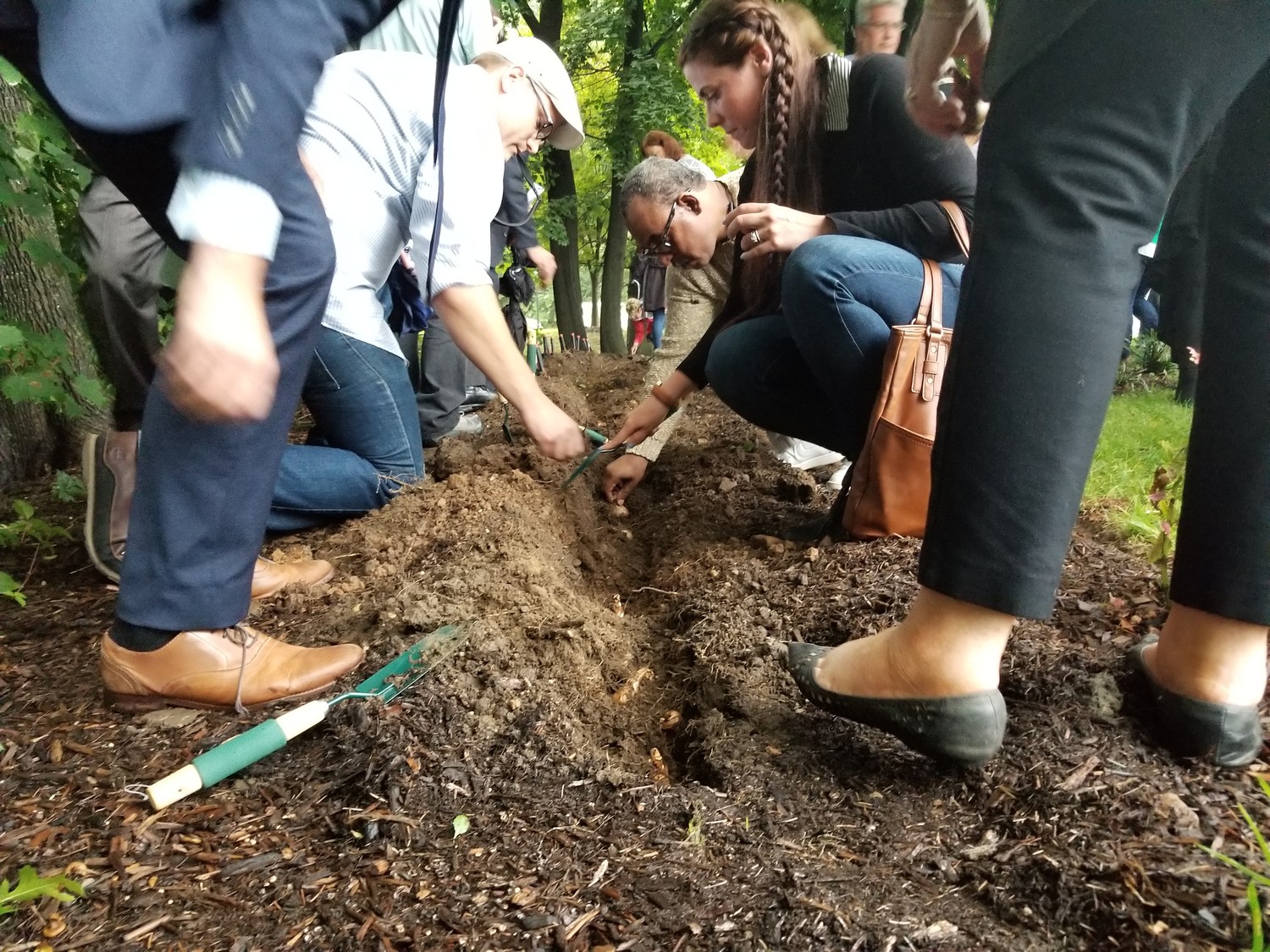Glen Cove remembers the day that shook the nation
Enshrining the legacy of 9/11
Where flowers bloom, so does hope.
–Lady Bird Johnson
Tony Jimenez remembers what Glen Cove was like on Sept. 11, 2001, after two commercial jetliners struck the twin towers of the World Trade Center. “Every member of EMS [and the Fire Department] showed up at headquarters to see what they could do,” Jimenez recalled.
At a somber ceremony at Glen Cove’s Heritage Garden honoring those who died in the terrorist attacks 17 years ago — and to recognize those who, like Jimenez, took part in the cleanup effort — Mayor Tim Tenke quoted the former first lady to introduce what he hoped would become a new city tradition: the Daffodil Project, wherein each Sept. 11, residents plant daffodil bulbs in Glen Cove’s Heritage Garden. New York City has a Daffodil Project, and millions of bright yellow flowers are planted each year.
The memorial ceremony focused on the four Glen Covers who died in the attack: Edward Lehman, Matthew McDermott, John Puckett and Joseph Zuccala. Their names were enshrined on paving stones that line the city’s Heritage Garden — itself a symbol of Glen Cove’s history — “so that generations to come will not forget them,” Tenke said.
Before the ceremony, roses had been placed on the stones bearing the names, and they remained there, undisturbed, even as an honor guard — including members of the Glen Cove police and fire departments, EMS and harbor patrol — marched carefully over them to the city’s 9/11 memorial, on the other side of the firehouse.
There, Tenke, with the assistance of Puckett’s daughter, Michelle Puckett-Formolo, laid a wreath in honor of all those who died in the World Trade Center attacks.
Looking back
Several Glen Covers, including Jimenez and Beth Nugent — then a Nassau County police officer, now retired — volunteered to work at ground zero. “The last person to be brought out alive was on the 12th,” Nugent said, adding, “but there was hope for many more.”
Nugent talked about the “silence whistle,” blown whenever a search party thought they might have heard a survivor amid the debris. “On my side [of the pile of debris]” she added, “we didn’t find anyone.”
After a few days, Jimenez said, the effort at ground zero turned from rescue to recovery. He recalled the red bags used to transport body parts to an EMS station at a separate site for possible identification and, ultimately, reunification with loved ones.
Nassau County Legislator Delia DiRiggi-Whitton recalled speaking with Jimenez at the time about the fumes and dust at ground zero, and expressing her concerns about potential health problems. Those concerns, it turned out, were well founded. Since 2001, almost 10,000 people have been diagnosed with 9/11-related illnesses, and more than 2,000 have died of them. Neither Jimenez nor Nugent spoke in detail, but both said that, 17 years later, they were dealing with health problems related to the cleanup.
At the memorial, DiRiggi-Whitton, recounted a recent conversation with Jimenez. “I said, ‘Darn it, Tony, I wish we knew that those chemicals were so bad and that it was so dangerous for you to go in.’”
“He looked at me,” she continued, “and said, ‘It wouldn’t have mattered. I was going in.’”

 49.0°,
Fog/Mist
49.0°,
Fog/Mist 





